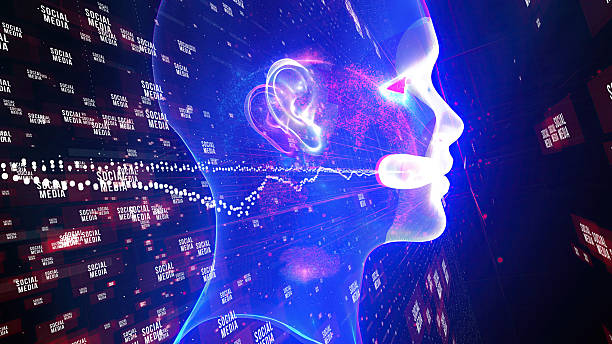### What is an Artificial Intelligence Robot? Basic Definition and Concept
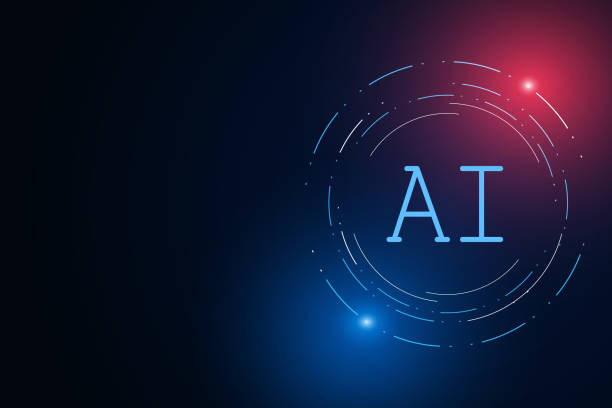
An artificial intelligence robot is a combination of two fields: #robotics and #artificial_intelligence.
These robots are not only capable of performing physical tasks, but also use artificial intelligence algorithms to learn, make decisions, and solve complex problems.
In other words, an artificial intelligence robot is a machine that can perform tasks that require understanding, reasoning, and learning by mimicking human intelligence.
These robots are used in various industries, including manufacturing, healthcare, customer service, and even finance.
They collect data using sensors and make appropriate decisions using complex algorithms.
Advanced artificial intelligence robots can interact with the environment, learn from their experiences, and improve their performance.
The emergence of these robots has opened a new chapter in the automation and intelligence of processes, and their role is expected to become much more prominent in the near future.
This technology enables faster, more accurate, and cheaper production.
Artificial intelligence robots are rapidly advancing and have great potential to change our world.
Did you know that your company’s website is the first point of contact for 75% of potential customers?
Your website is the face of your brand. With **Rasaweb’s** corporate website design services, create an online presence that earns customer trust.
✅ Create a professional and lasting image of your brand
✅ Attract target customers and increase online credibility
⚡ Get free consultation from **Rasaweb** experts!
Brief History of Smart Robots: Advances and Milestones
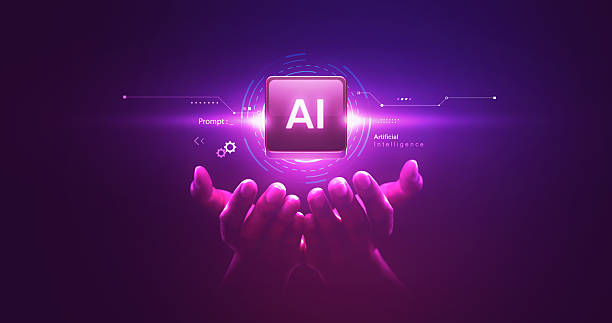
The history of smart robots dates back decades, when initial ideas about building machines capable of thinking and acting were proposed.
The first industrial robots were built in the 1960s, but these robots were only capable of performing repetitive and programmed tasks.
The main turning point occurred in the 1980s with the emergence of artificial intelligence algorithms.
These algorithms allowed robots to process information and make smarter decisions through machine learning.
In the 1990s and 2000s, significant advances were made in image processing, speech recognition, and autonomous robots.
Today, artificial intelligence robots are more advanced and complex than ever, and can operate in dynamic and unpredictable environments.
Smart robots are used in various fields, including medicine, space, agriculture, and transportation, and play an important role in improving the quality of human life.
With the ever-increasing advances in artificial intelligence, smart robots are expected to be able to perform more complex tasks in the near future and play a more prominent role in our daily lives.
Artificial intelligence robots are a revolution in technology that improves human life.
The Main Components of an Artificial Intelligence Robot: Sensors, Processors, and Actuators

An artificial intelligence robot consists of three main components: sensors, processors, and actuators.
Sensors are responsible for receiving information from the surrounding environment.
These sensors can include cameras, microphones, temperature sensors, pressure sensors, and motion sensors.
The information collected by the sensors is transferred to the processors.
Processors are the thinking brains of the robot and are responsible for processing information, making decisions, and controlling actuators.
Processors use artificial intelligence algorithms to analyze data and make appropriate decisions.
Actuators are the physical components of the robot that are responsible for performing physical tasks.
These actuators can include motors, arms, wheels, and other mechanical components.
The interaction between these three components allows the artificial intelligence robot to interact with the environment, perform its tasks, and learn continuously.
For example, an artificial intelligence robot that is responsible for sorting goods in a warehouse uses cameras to identify goods, processors to determine the appropriate location to place the goods, and arms to pick up and move the goods.
It is this coordinated interaction between the components that allows the artificial intelligence robot to perform complex tasks.
| Components | Description |
|---|---|
| Sensors | Collect information from the surrounding environment (cameras, microphones, sensors) |
| Processors | Process information, make decisions, and control actuators |
| Actuators | Perform physical tasks (motors, arms, wheels) |
Applications of Artificial Intelligence Robots in Various Industries

Artificial intelligence robots are used in various industries and play an important role in improving efficiency and reducing costs.
In the manufacturing industry, artificial intelligence robots are used to perform repetitive and dangerous tasks such as welding, painting, and packaging.
In the healthcare industry, artificial intelligence robots are used to perform precise surgeries, care for patients, and deliver medication.
In the customer service industry, artificial intelligence robots are used as chatbots to answer customer questions and provide support services.
In the financial industry, artificial intelligence robots are used to analyze data, predict market trends, and manage risk.
In addition, artificial intelligence robots are used in other fields such as agriculture, transportation, education, and entertainment.
Artificial intelligence robots improve performance and reduce costs in various industries by increasing accuracy, speed, and efficiency.
These robots can also operate in dangerous and inaccessible environments for humans and play an important role in maintaining human safety and health.
The use of artificial intelligence robots is a necessity to maintain competitiveness in today’s world.
Still don’t have a corporate website and are missing online opportunities? With professional corporate website design by Rasaweb,
✅ Double the credibility of your business
✅ Attract new customers
⚡ Free consultation for your corporate website!
Types of Artificial Intelligence Algorithms Used in Robots
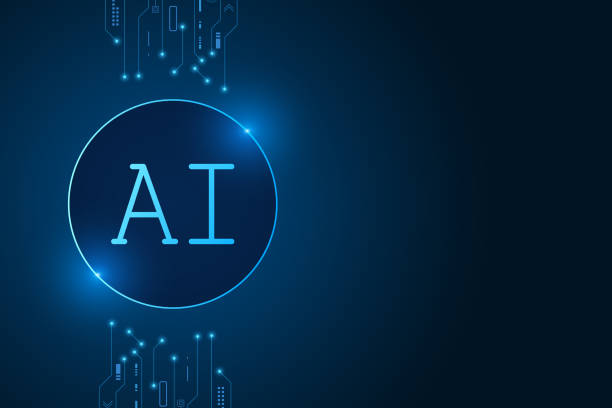
Artificial intelligence robots use various types of artificial intelligence algorithms to perform their tasks.
Machine learning is one of the most important artificial intelligence algorithms that allows robots to learn from data and improve their performance.
Neural networks are a type of machine learning algorithm that is inspired by the structure of the human brain and is used to solve complex problems such as image recognition and speech recognition.
Reinforcement learning is another algorithm that allows robots to optimize their behavior through trial and error.
Planning algorithms allow robots to plan a sequence of actions to achieve a specific goal.
In addition, other algorithms such as search algorithms, optimization algorithms, and reasoning algorithms are also used in artificial intelligence robots.
The choice of the appropriate algorithm depends on the type of task and the environment in which the robot operates.
Using these algorithms, artificial intelligence robots can make smarter decisions and perform better.
Challenges of Developing and Implementing Artificial Intelligence Robots
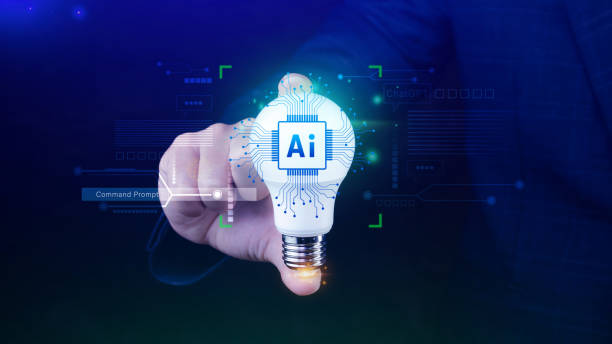
The development and implementation of artificial intelligence robots faces many challenges.
One of the most important challenges is the high cost of developing and maintaining these robots.
Building artificial intelligence robots requires a significant investment in hardware, software, and specialized human resources.
Another challenge is the complexity of artificial intelligence algorithms.
Designing and implementing algorithms that can effectively work with complex and unpredictable data is difficult.
In addition, ethical and legal issues are also among the important challenges in the field of artificial intelligence robots.
Questions such as who is responsible for the decisions of robots and how to prevent misuse of this technology require careful consideration and response.
There are also concerns about the impact of robots on the job market and the potential for replacing humans with robots.
Despite their high potential, artificial intelligence robots require careful attention and management to fully benefit from their advantages and prevent their potential risks.
The Future of Artificial Intelligence Robots: Predictions and Emerging Trends

The future of artificial intelligence robots is very bright and full of potential.
It is predicted that in the near future, artificial intelligence robots will play a more prominent role in our daily lives and will be used in various fields such as medicine, education, transportation, and entertainment.
One of the emerging trends in this area is the development of autonomous robots that are capable of making decisions and acting without human intervention.
Autonomous robots can operate in dangerous and inaccessible environments for humans and play an important role in maintaining human safety and health.
Another trend is the development of collaborative robots that interact with humans in work environments and help them perform tasks.
Collaborative robots can help improve the performance of organizations by increasing efficiency and reducing errors.
In addition, the ever-increasing advances in artificial intelligence enable the development of smarter robots that are capable of learning, reasoning, and solving complex problems.
Artificial intelligence robots are rapidly advancing and we expect to see significant developments in this field in the near future.
| Trend | Description |
|---|---|
| Autonomous Robots | Decision-making and acting without human intervention |
| Collaborative Robots | Interacting with humans in work environments |
| Smart Robots | Learning, reasoning, and solving complex problems |
The Impact of Artificial Intelligence Robots on the Job Market: Opportunities and Challenges

The impact of artificial intelligence robots on the job market is a topic that brings both opportunities and challenges.
On the one hand, artificial intelligence robots can help increase productivity and reduce costs by automating repetitive and dangerous tasks.
This can lead to the creation of new job opportunities in fields such as robot design, development, maintenance, and management.
On the other hand, there are concerns about the potential for replacing humans with robots and increasing unemployment.
To address this challenge, governments and organizations need to provide training and empowerment programs to train workers with new skills.
Also, supportive and social policies need to be considered to support people who lose their jobs due to automation.
Artificial intelligence robots, by creating transformations in the job market, require a comprehensive and balanced approach that both benefits from the advantages of this technology and prevents its potential risks.
The use of artificial intelligence robots is a necessity to maintain competitiveness.
Do you dream of a prosperous online store but don’t know where to start?
Rasaweb is your comprehensive e-commerce website design solution.
✅ Attractive and user-friendly design
✅ Increase sales and revenue⚡ Get free consultation
Ethical and Legal Issues Related to Artificial Intelligence Robots
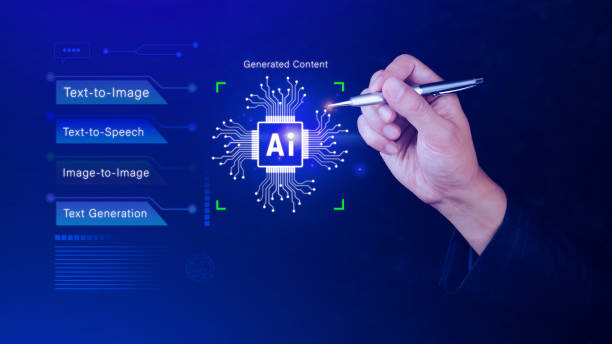
The development of artificial intelligence robots has raised numerous ethical and legal issues.
One of the most important issues is the accountability of robots.
Questions such as who is responsible for the decisions of robots and how robots can be held accountable for their actions require careful consideration and response.
Another issue is privacy and data security.
Artificial intelligence robots typically collect and process a lot of data, and maintaining the privacy and security of this data is of utmost importance.
In addition, there are concerns about the misuse of artificial intelligence robots for illegal and unethical purposes.
To address these challenges, it is necessary to develop comprehensive laws and regulations in the field of artificial intelligence robots and to set clear ethical standards for the development and use of this technology.
Artificial intelligence robots need attention to ethical and legal issues so that they can be used responsibly and safely.
How Can Businesses Benefit from Artificial Intelligence Robots?
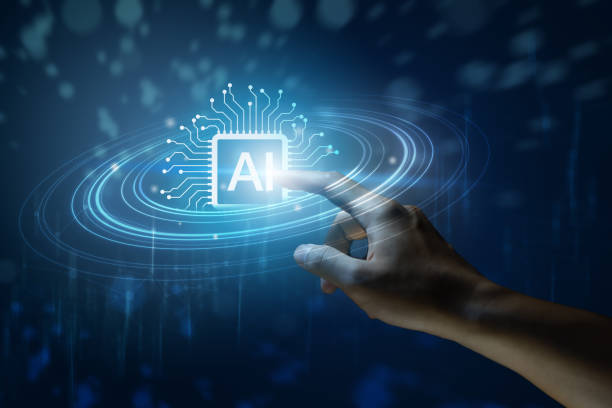
Businesses can benefit from artificial intelligence robots to improve efficiency, reduce costs, and increase customer satisfaction.
One of the common uses of artificial intelligence robots in businesses is the automation of repetitive and time-consuming processes.
By automating these processes, employees can focus on more important and creative tasks, and the overall productivity of the organization increases.
Artificial intelligence robots can also be used to improve customer service.
Chatbots can answer customer questions, solve their problems, and provide them with the information they need.
In addition, artificial intelligence robots can be used to analyze data and provide valuable insights to businesses.
By analyzing data, businesses can identify important patterns and trends and make better decisions.
By providing innovative and efficient solutions, artificial intelligence robots help businesses succeed in today’s competitive market.
FAQ
| Row | Question | Answer |
|---|---|---|
| 1 | What is an Artificial Intelligence Robot? | An AI robot is a machine capable of understanding, reasoning, learning, and problem-solving, and can perform complex tasks with relative autonomy. |
| 2 | What are the most important applications of AI robots? | The main applications include industrial manufacturing, customer service (chatbots), medicine and surgery, self-driving transportation, space exploration, and military affairs. |
| 3 | What is the main difference between an AI robot and a regular robot? | A regular robot only follows programmed instructions, while an AI robot can learn from data, make decisions, and adapt to new environments. |
| 4 | How do AI robots learn? | They identify patterns and improve their performance through machine learning algorithms (such as deep learning, reinforcement learning) and processing a huge amount of data. |
| 5 | Can AI robots have emotions? | Currently, AI robots do not have real emotions in the human sense. They can mimic or recognize emotions, but they do not understand or experience them. |
| 6 | What are the current limitations of AI robots? | Limitations include the need for a lot of data, the inability to understand abstract concepts, the lack of real creativity, ethical issues, and the challenges of generalizability in new environments. |
| 7 | What is the role of AI in the development of Humanoid robots? | AI helps humanoid robots walk, maintain their balance, understand their surroundings, interact with humans, and perform complex tasks. |
| 8 | How is the future of AI robots predicted? | AI robots are predicted to be smarter, more autonomous, and capable of performing more complex tasks in daily life and industry, and their interaction with humans will increase. |
| 9 | Can AI robots replace all human jobs? | It is unlikely that all human jobs will be replaced. Robots take on many repetitive and dangerous tasks, but jobs that require creativity, empathy, and moral judgment will remain. |
| 10 | What ethical and social challenges arise with the expansion of AI robots? | Challenges include issues related to privacy, data security, ethical decision-making by robots, the impact on employment, and accountability in case of errors. |
And other services of Rasa Web advertising agency in the field of advertising
Smart Reportage: A professional solution to increase click-through rates by focusing on attractive user interface design.
Smart Digital Advertising: A novel service to increase website visits through the use of real data.
Smart Customer Journey Map: Designed for businesses looking to increase click-through rates through Google Ads management.
Smart Advertising Campaign: Transform SEO ranking with the help of customizing user experience.
Smart Direct Marketing: Designed for businesses looking for digital branding through custom programming.
And more than hundreds of other services in the field of Internet advertising, advertising consulting and organizational solutions
Internet Advertising | Advertising Strategy | Reportage Ad
Resources
Artificial Intelligence Robots, the Fourth Industrial Revolution
,Smart Robot; From Imaginations to Problems
,Smart AI Robot and Untold Opportunities in Life
,Artificial Intelligence Robots Conference
? In order for your business to reach its peak in the digital world and have a powerful and influential presence, Rasaweb Afarin Digital Marketing Agency, with expertise in key areas such as user-friendly website design, search engine optimization (SEO), and targeted advertising campaigns, paves the way for your growth.
📍 Tehran, Mirdamad Street, next to the Central Bank, South Kazerun Alley, Ramin Alley No. 6

